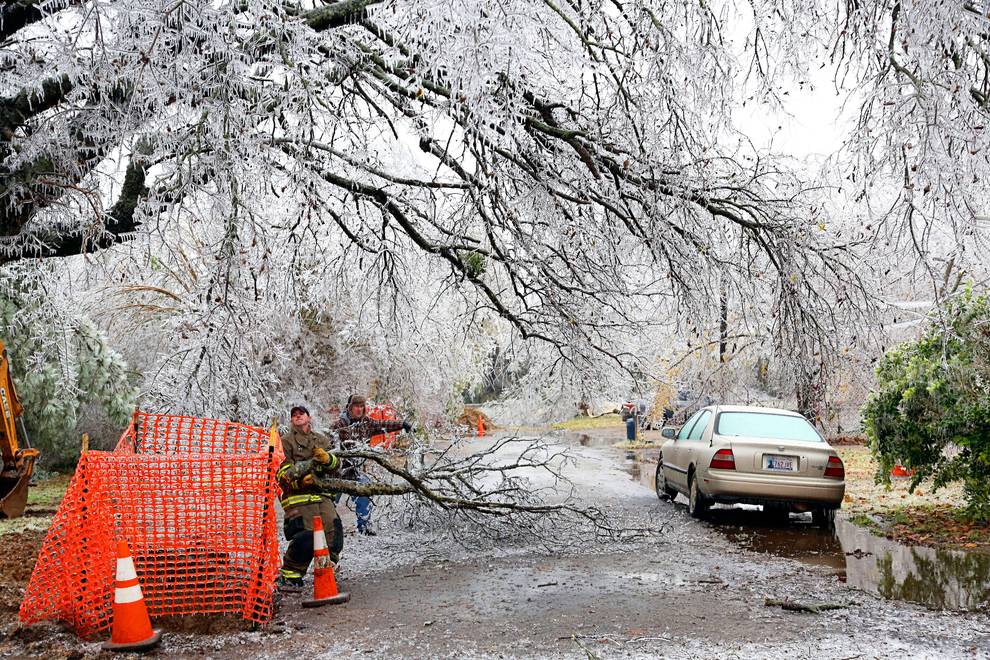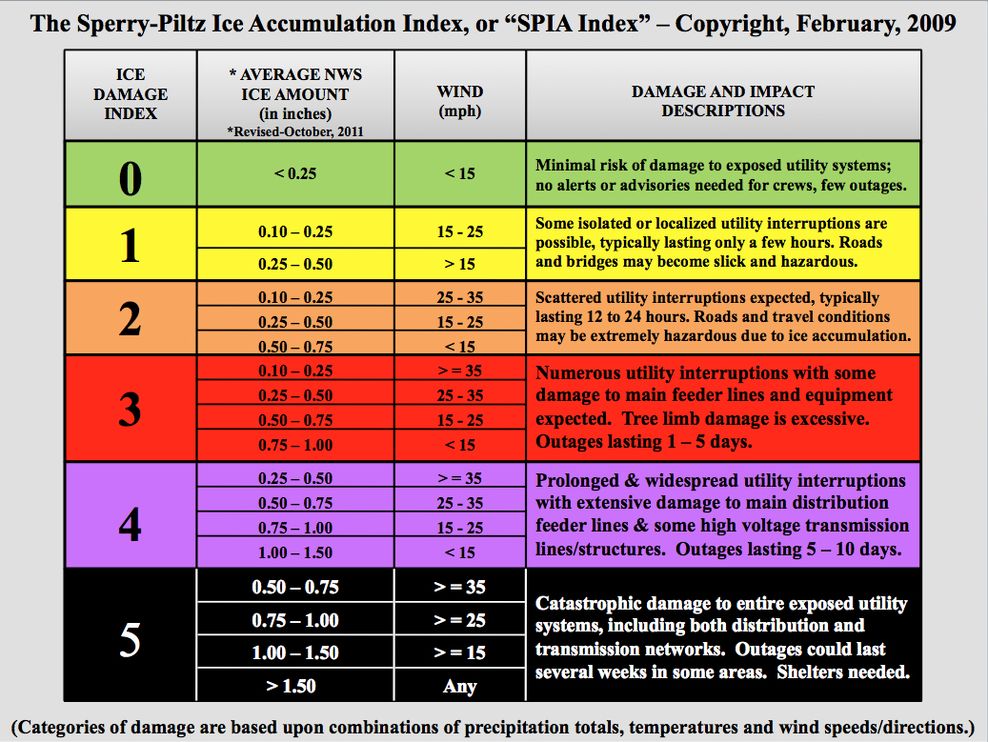
As the ice storm that pummeled much of the United States on Thursday continues to lock the country in a deep freeze, some areas may be more ready than others to deal with the consequences.
That's because a new index is under development that can be used to categorize expected damage from ice storms, dangerous phenomena that occur when rain freezes on contact with the ground or other surfaces. (Read more about weather and natural disasters.)
Now being tested at 10 of the 122 National Weather Service (NWS) offices throughout the country, the Sperry-Piltz Ice Accumulation (SPIA) Index has potential to give utility companies and emergency-management teams - such as the Salvation Army and the Red Cross - more lead time to prepare for power outages and provide shelter to those in need.
Tulsa, Oklahoma; Springfield, Missouri; and Paducah, Kentucky were among the first offices to begin testing the index, and those cities have seen real impacts on preparedness for ice events, such as enabling power companies to order the necessary lumber to replace power poles even before a storm hits. Seeing the SPIA Index's success, five more cities, including Nashville, Tennessee, and Little Rock, Arkansas, began to use the system this year.
Several years in the making, the index integrates already available forecasting data into an algorithm that estimates how much damage an ice storm will produce, especially focusing on damage to the cities' utility systems. It ranks the weather events from 0 (minimal damage) to 5 (catastrophic damage). This data also gives a sense of how long regions can expect their power be out.
Sidney K. Sperry of the Oklahoma Association of Electric Cooperatives, who co-founded the index with Steven Piltz, chief meteorologist at the NWS office in Tulsa, thinks the index can be used to save lives.
"There was an incident where one of our service areas was hit by a major ice storm, and people were without power for 21 days," Sperry said.
"There was an elderly lady who literally froze to death in her own home because she didn't have power," he added.
"The SPIA index can be used to help utilities prepare" and warn customers that their power may be out for extended periods.

After working for 25 years in the electrical utility industry, Sperry first brought the idea for the index to his local NWS office in Tulsa in 2006.
Piltz immediately recognized the value of such an index: The system currently in place in most of the U.S. is to issue ice storm warnings when an accumulation of more than 0.25 inch (0.6 centimeter) is predicted.
But that oversimplifies the matter, Piltz said. "What Sid taught me is that wind is an equal player in the damage potential," he explained.
"You can have power losses with less than a quarter of an inch [of ice] if you've got gusty winds." (See extreme-weather pictures.)
The NWS Tulsa office began to use the SPIA Index in January 2007. The weekend after, the index successfully helped prepare Tulsa for a category 4 ice storm. Ice storms are crippling to utilities, whether they're communications or electric, Sperry said. In 2007, "we were predicting the damage ahead of that [first storm] by about two days in advance," giving Tulsa more time to get ready.
The index was also used in Oklahoma in the recent ice storm, categorizing its local impacts as up to level 5 in some isolated areas.
"I'd love to see a catastrophic 5 be reduced to where the outage time is, say, maybe only a matter of ten days rather than two weeks," Sperry said.
"That's the goal, to try and enhance preparedness so we can try and reduce outage times for utilities."
While only a small fraction of NWS offices currently use the system, Sperry hopes those offices testing it out will adopt it permanently, and the index will expand to other offices by next winter.



Reader Comments
to our Newsletter